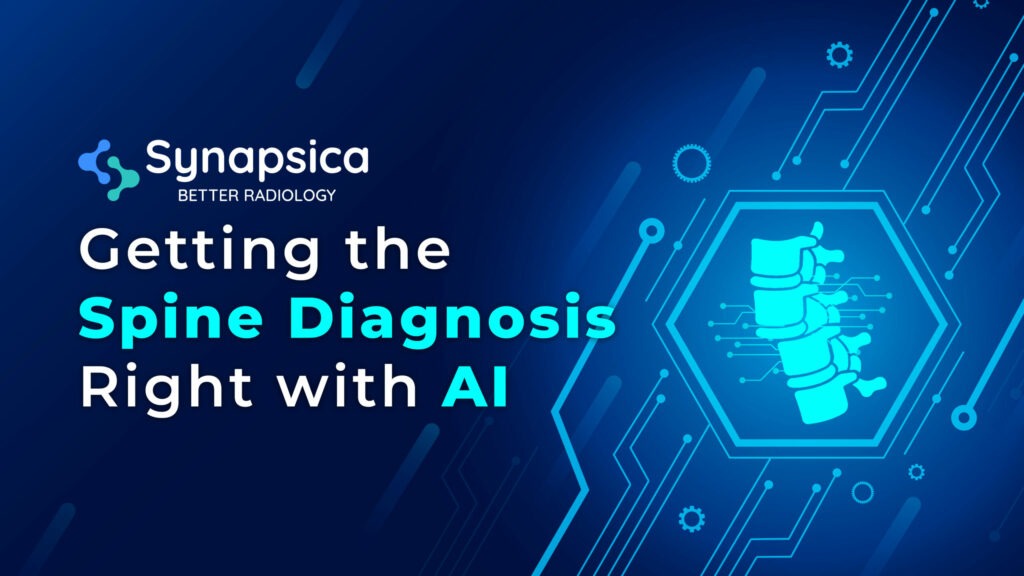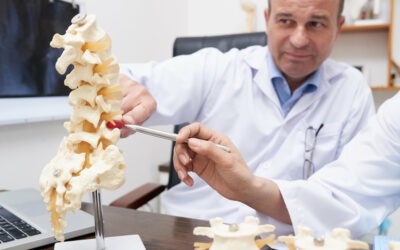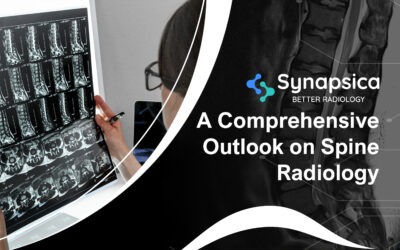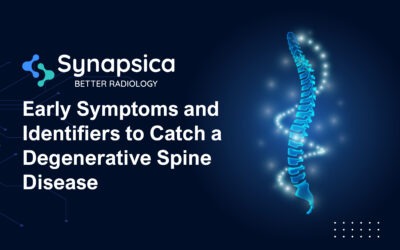
Nearly 8% of the world’s adult population suffers from persistent or chronic back pain. Spine problems are increasing in prevalence and incidence like never before, creating financial implications for patients and demand for spine diagnosis tools.
While advancements in science and technology are enabling healthcare professionals to treat spine problems, diagnosing back pain and spine injuries is highly challenging as there is no defined protocol or guideline to handle the problem.
Besides, the length of doctor’s visits is shrinking every year and a typical 15-minutes doctor visit isn’t enough to examine, understand, and explain everything that is going on in the spine.
Various factors contribute to back pain – lifestyle changes, bad postures while standing, sitting, and sleeping, injuries – past and present, degenerative disorders, and other diseases. Typically, diagnosing the actual cause of back pain requires the expertise and collaboration of physicians from different disciplines, say, primary care doctors, orthopedic physicians, physical therapists, physiatrists, etc. Thus diagnosing the root cause of back pain is not only tricky but also time-consuming.
Before understanding how AI can help in identifying the root cause of back pain, let’s first explore why the spine diagnosis is challenging and gets overly delayed.
Challenges in diagnosing spine problems
Back pain can be caused by a combination of problems
The combination of problems causing back pain makes it increasingly difficult to narrow down the exact cause of pain. Even psychological factors like stress, anxiety, and depression can cause back pain. In certain cases, a person’s nerves send abnormal pain signals to the brain leading to neuropathic back pain.
For instance, a person can have spinal stenosis and herniated disc at the same time and can be experiencing pain due to either of the conditions. Since the treatment options are different for both conditions, carrying out an inaccurate treatment may not help in getting rid of the cause of pain. Also, the condition causing the back pain can worsen during the course of inaccurate treatment and can result in unpleasant outcomes.
Pain varies widely as it is a subjective experience
Pain is an experience that varies from person to person. What may seem mild to one, may seem severe to another. Similarly, the same condition can call for a different kind and level of treatment for different people.
For instance, in the case of common back pain, a strict exercise routine or an over-the-counter medication may be enough to treat or eliminate the pain. But, a person’s subjective experience can indicate that he/she is in need of a more robust treatment like an epidural steroid injection to treat the pain.
Diagnostic tests have limited value in spine problems
Spine diagnosis come with numerous potential issues as there is no single diagnostic test that can provide an accurate diagnosis of back pain. Also, some diagnostic tests like diagnostic nerve block injections may produce false-positive or false-negative results. Hence, diagnostic tests are of limited value in identifying spine problems.
However, the inadequacy of a single diagnostic test to identify the root cause of back pain doesn’t mean that medical practitioners cannot diagnose spine problems through diagnostic tests. Common conditions such as a lumbar herniated disc that triggers symptoms of sciatica can be diagnosed accurately and quickly through a bunch of clinical tests accompanied by imaging tests, and questions.
Pinpointing the exact reason or source of back pain can be challenging. Here is how our #AI products can help radiologists diagnose back pain and prepare a better treatment plan.
— Synapsica (@SynapsicaAI) April 25, 2022
To learn more about our AI products, visit https://t.co/U1FDYMZRWi#BetterRadiology #radiologylife pic.twitter.com/9dxQCHDIVL
How AI can help in getting the spine diagnosis right
Artificial Intelligence is increasingly transforming healthcare, particularly branches like radiology and diagnostics. Artificial Intelligence, an advanced technology built to mimic human intelligence, can be used in the medical world, particularly in diagnosing spine diseases to improve treatment plans and the efficiency of doctors. For patients, AI can help in preventing decreased quality of life in the event of a spine problem or injury.
Here’s how.
Subsets of AI, namely, machine learning (ML), image processing, and computer vision, are becoming invaluable in medical image analysis, particularly for spine diseases as suspicions related to spine problems can be confirmed only through medical imaging. In case of spine injuries, CT scans are the first line of investigation.
Studies show that diagnostic errors of vertebral fractures can be reduced using AI. In an experiment conducted on a deep convolutional neural network (DCNN) trained with PTLR (Plain Thoracolumbar Radiography) images, the AI model diagnosed vertebral fractures accurately by 86%.
ML, a subset of AI that aims to make machines learn from their experience, can be used to gather information like the location of the disc, vertebrae, and spinal shape from radiographical images like CT and MRI scans and planar radiographs.
Even minor deformities in the spine can be the root cause of back pain. While the human eye can miss out on minor deformities, AI does not. In a study conducted by NCBI to compare the performance of AI with expert human observers in localizing and labeling spine structures, AI outperformed its opponent.
The applications of AI in diagnosing spine diseases and treating are vast. Here are a few:
* Diagnose and assess the progression of spine diseases
* Evaluate perioperative complications
* Analyze readmission rate after a spine surgery
* Automatically predict Modic changes, Pfirrmann grades, and spinal stenosis grades on MRI scans
* Assist in preoperative planning and intraoperative procedures
* Biomechanical assessment of spine disease
And much more…
In current times, AI is integrated with commercial PACS (Picture and Archiving Communication System) and clinical imaging software programs. For instance, Spindle, an AI reporting assistant for spine MRIs, automatically identifies key vertebral points and generates preliminary reports with the characterization of the underlying condition along with necessary spinal measurements.





